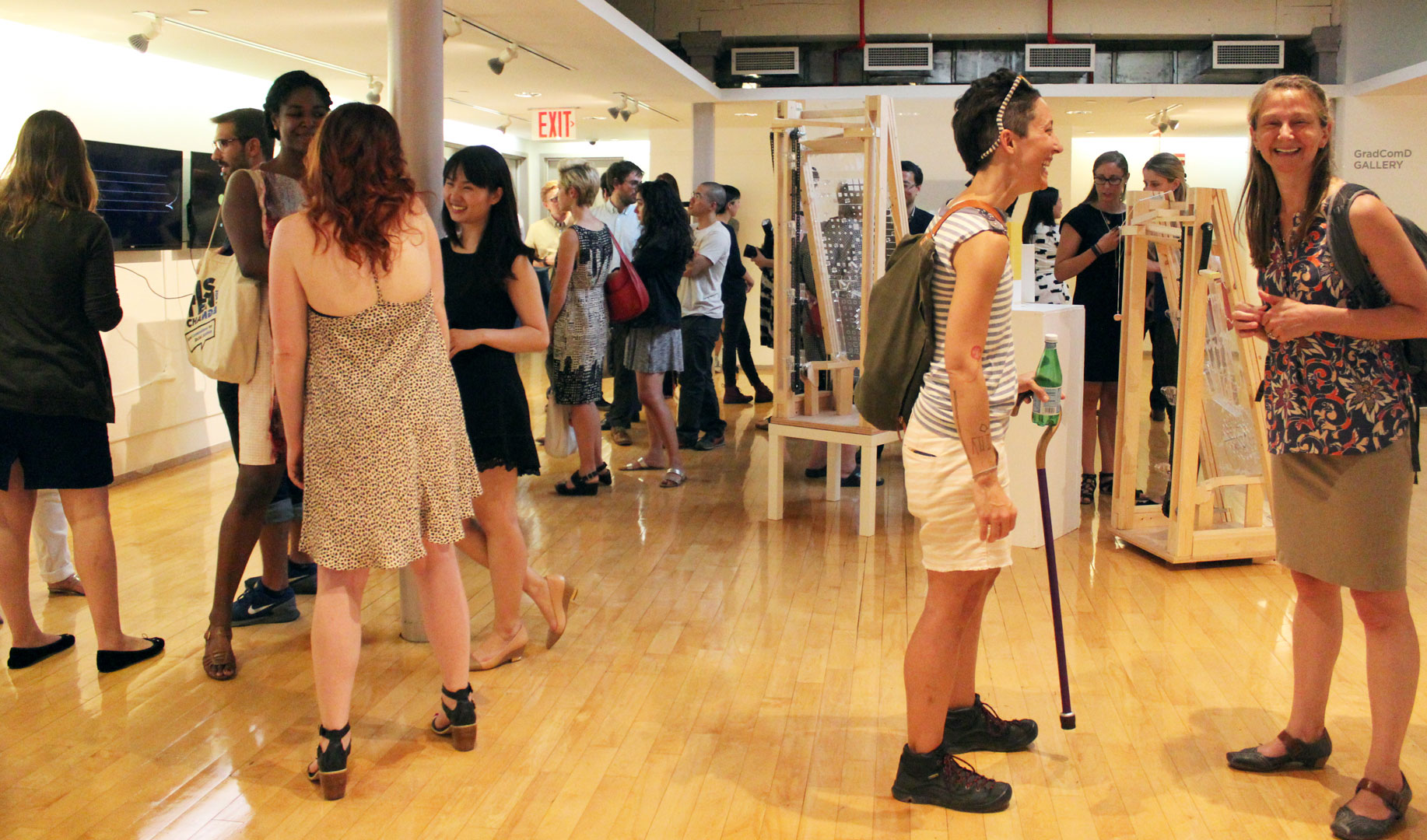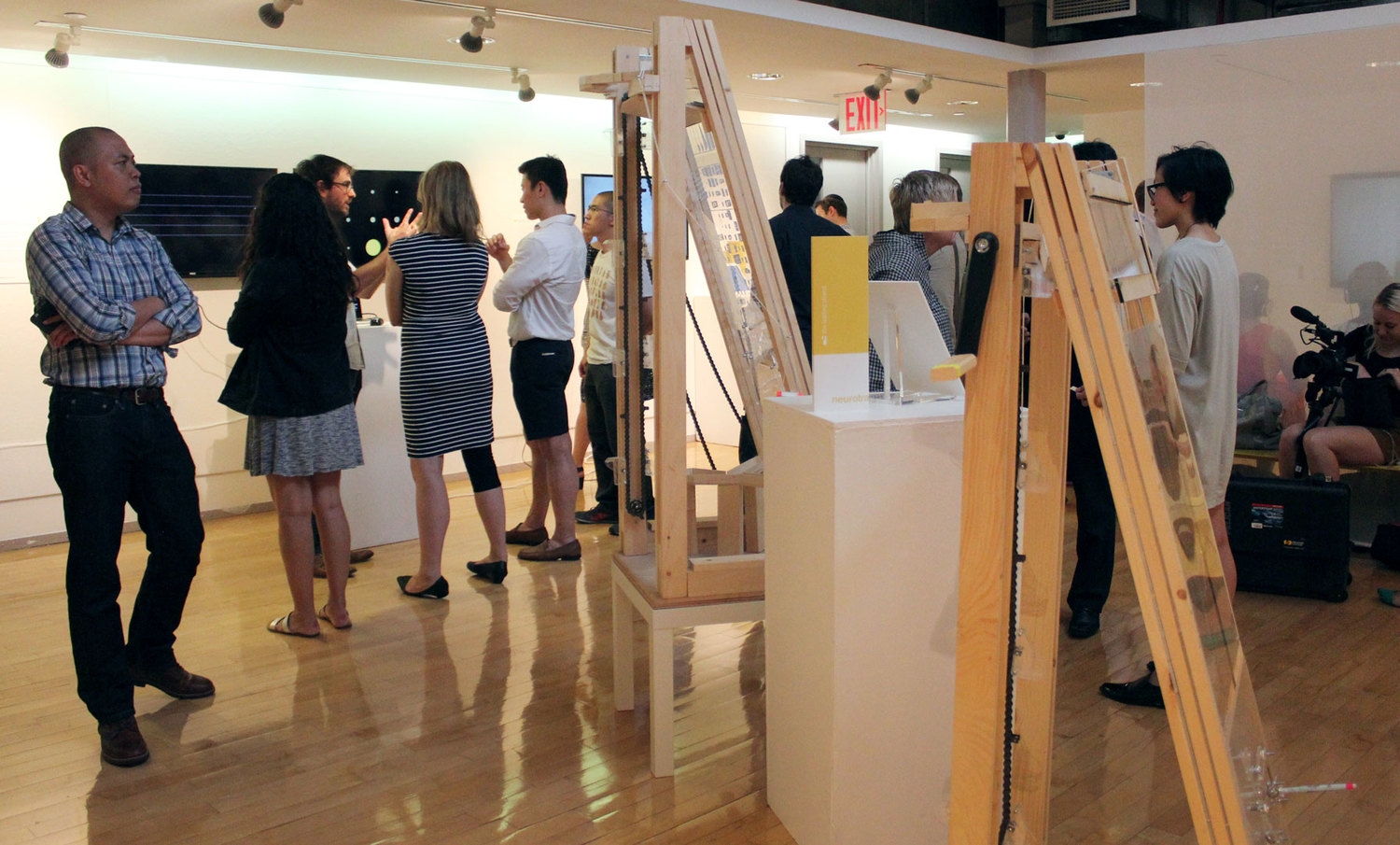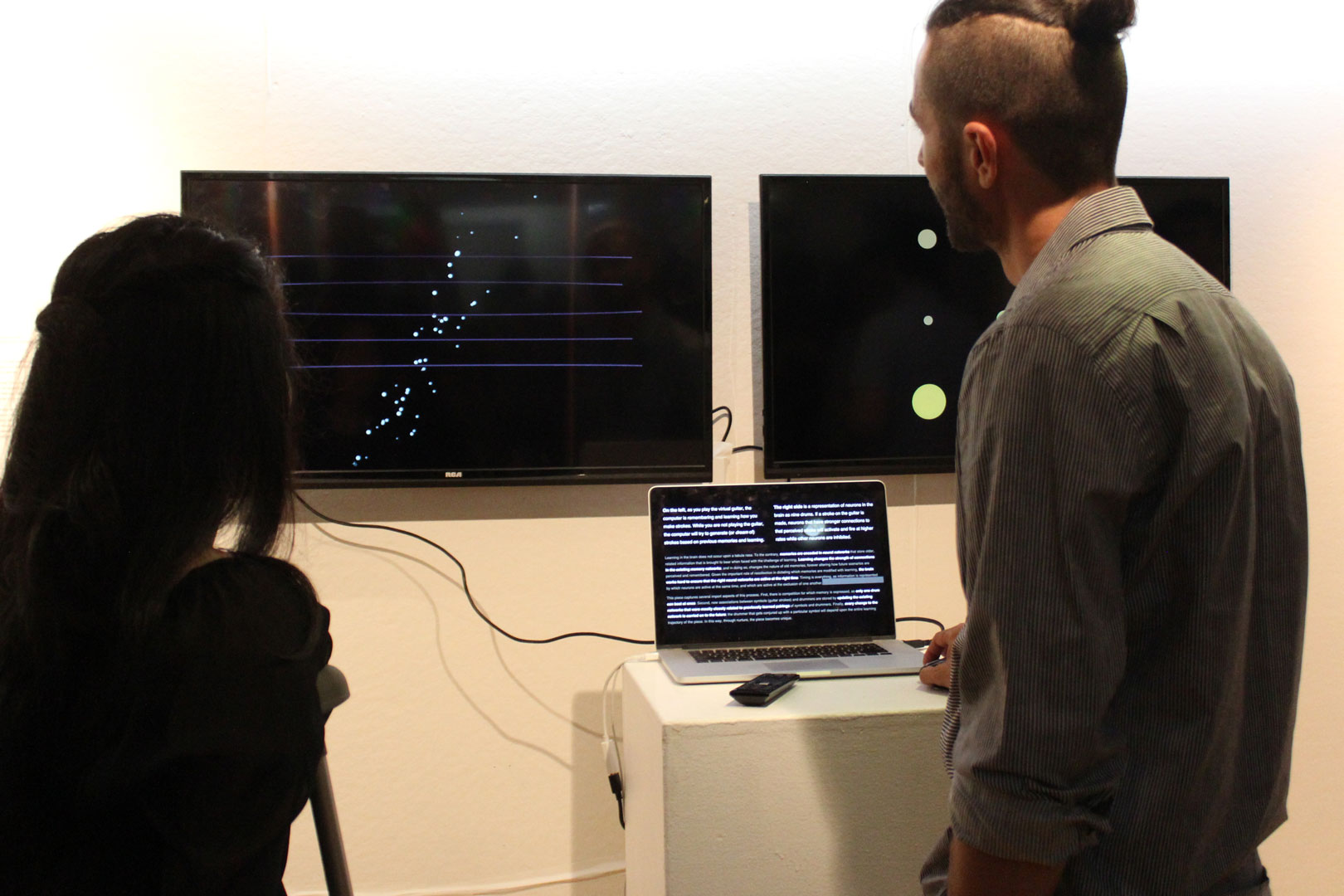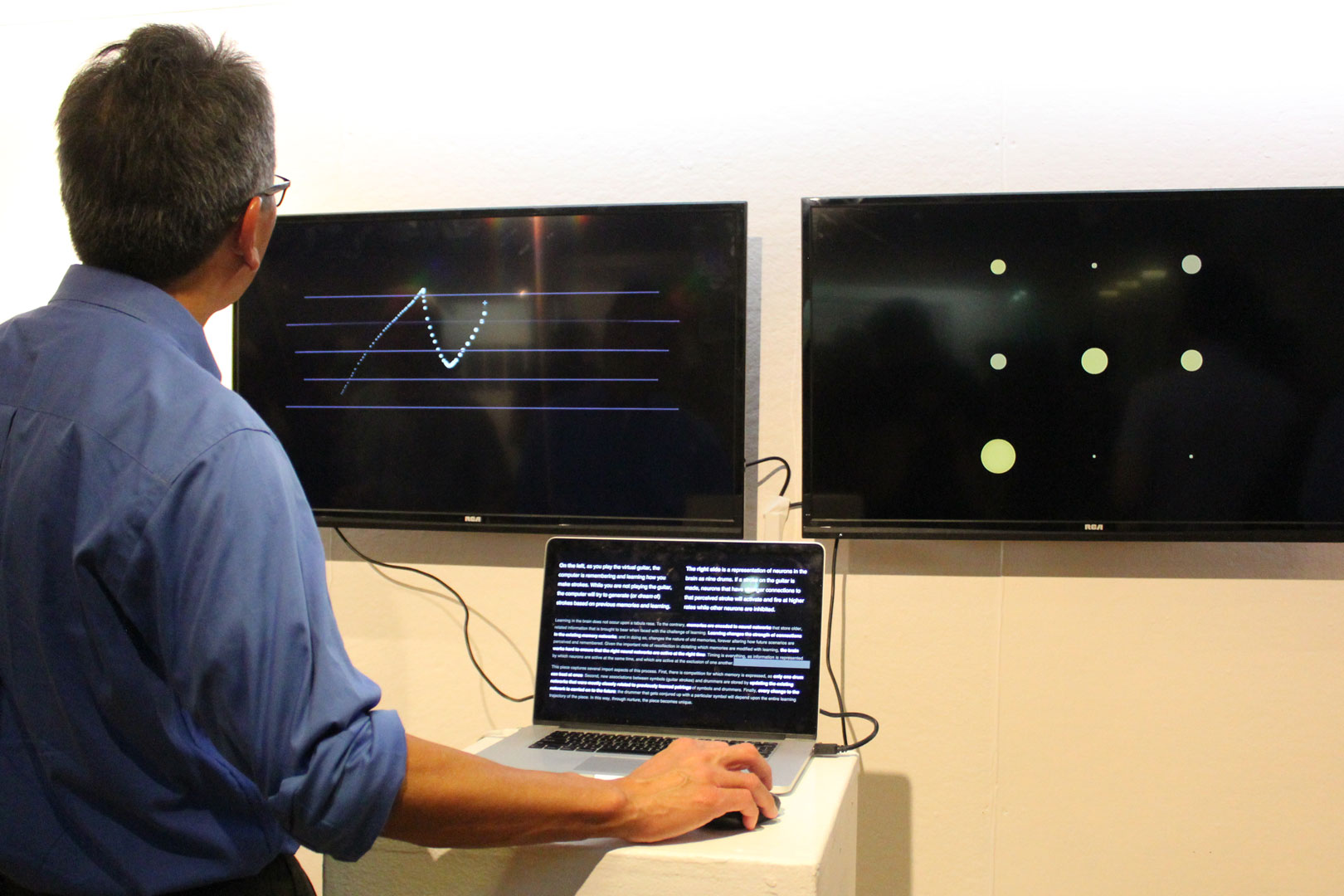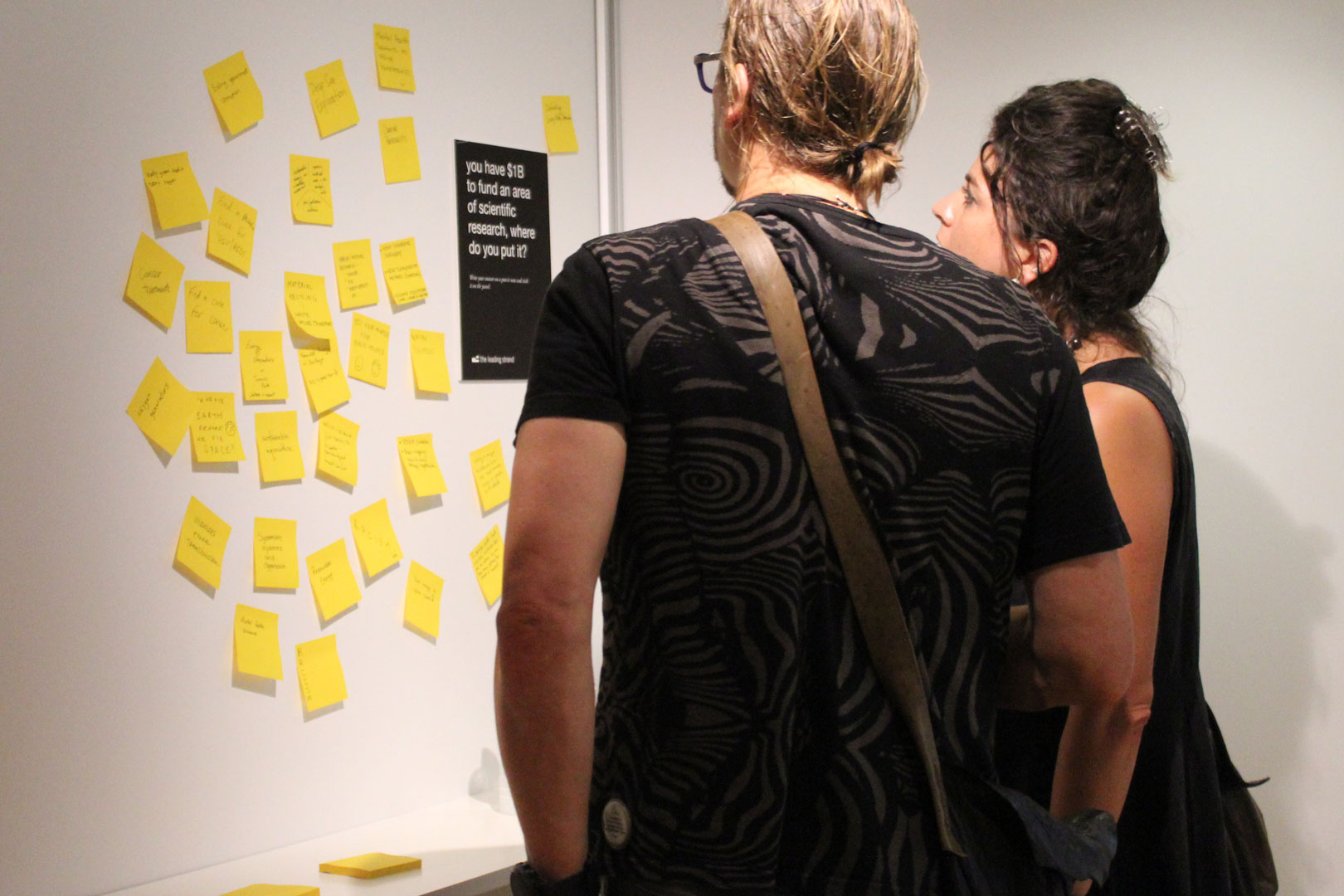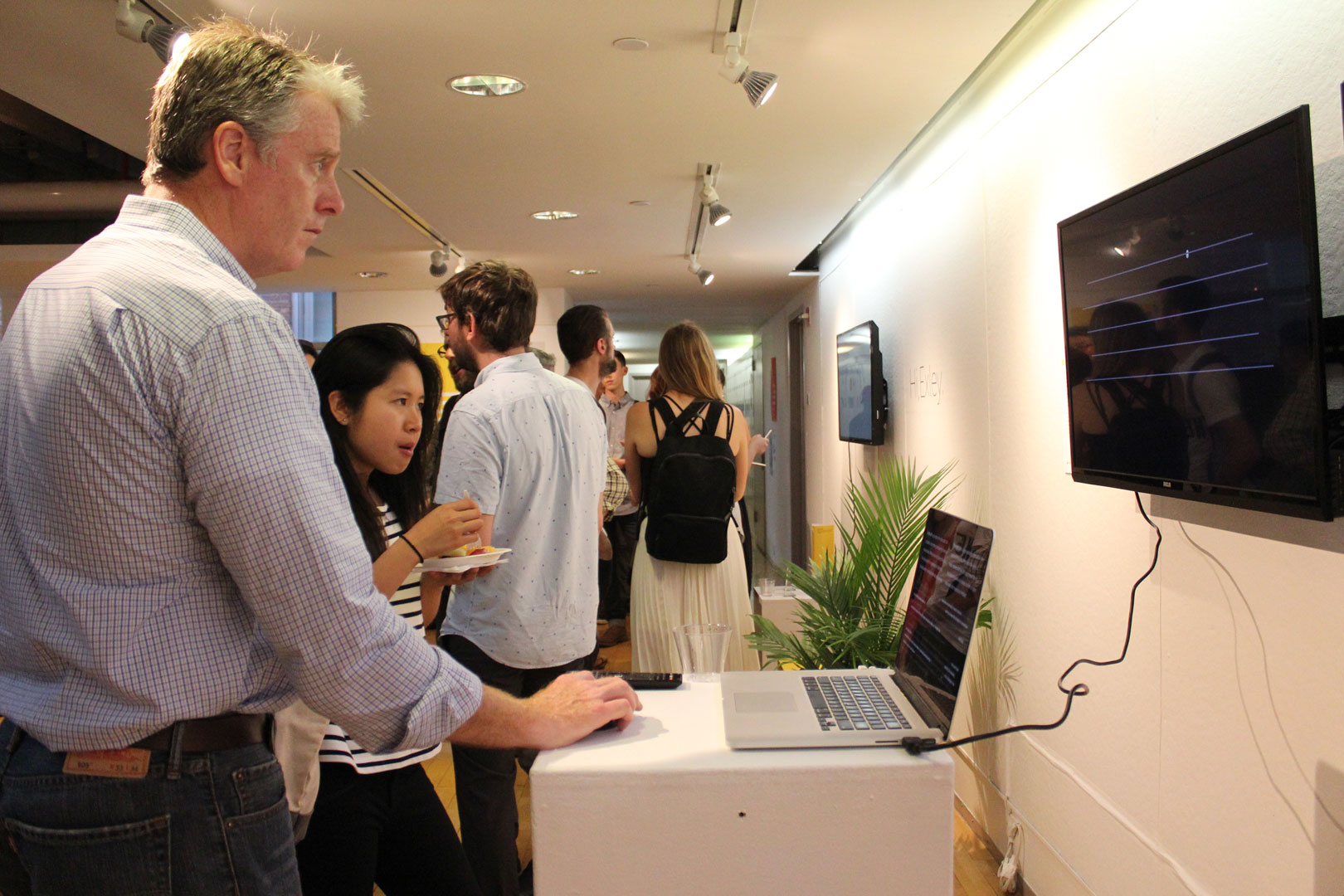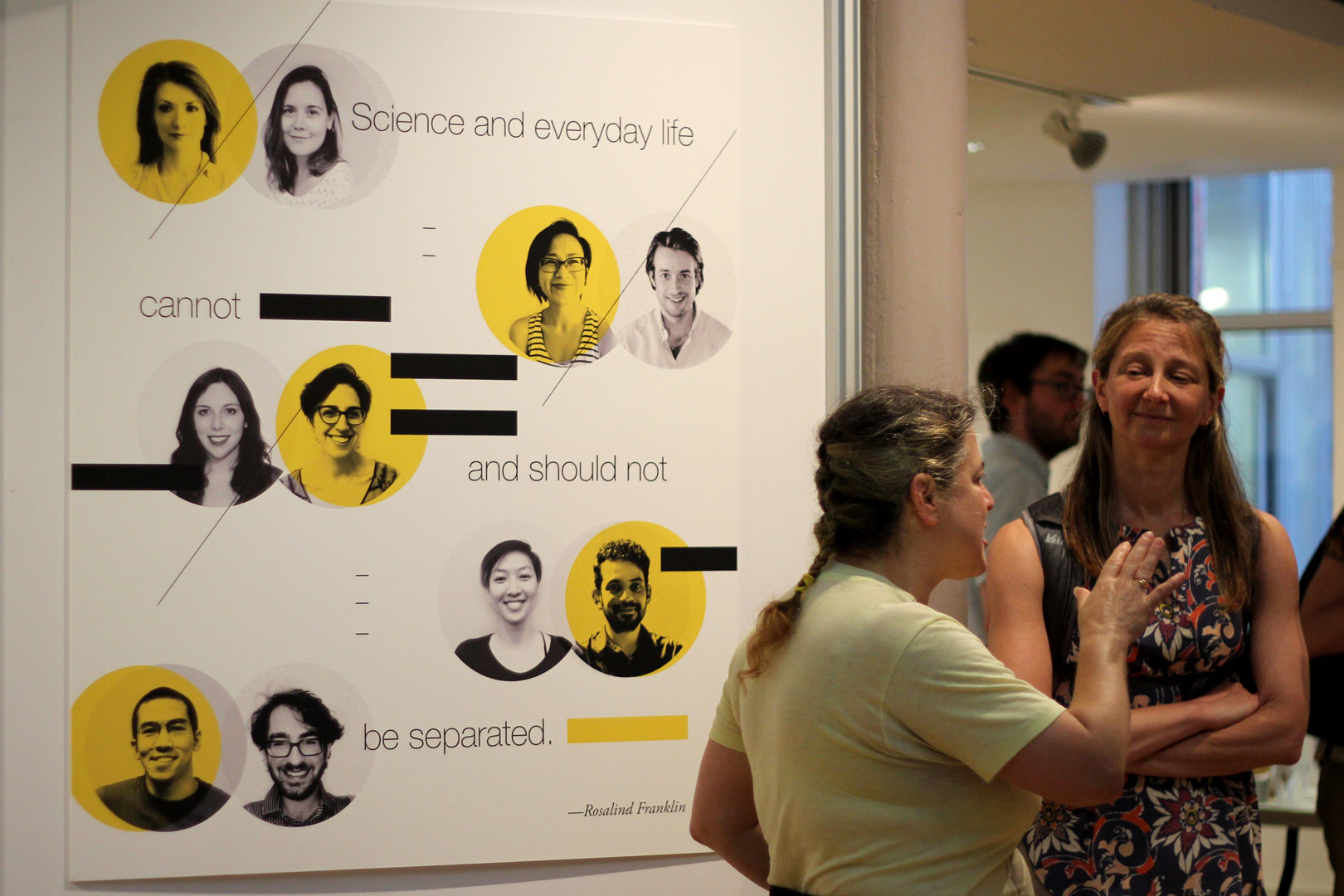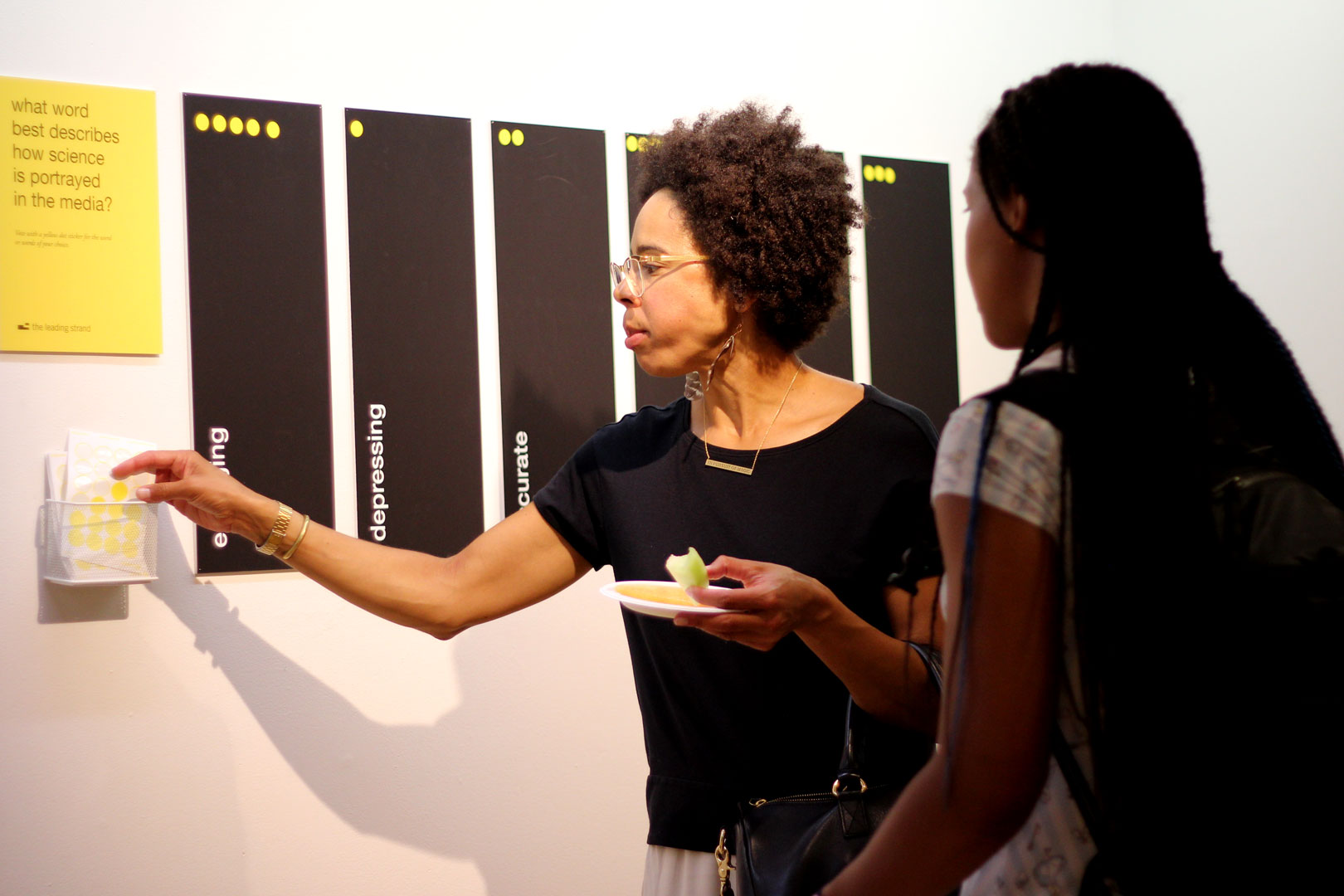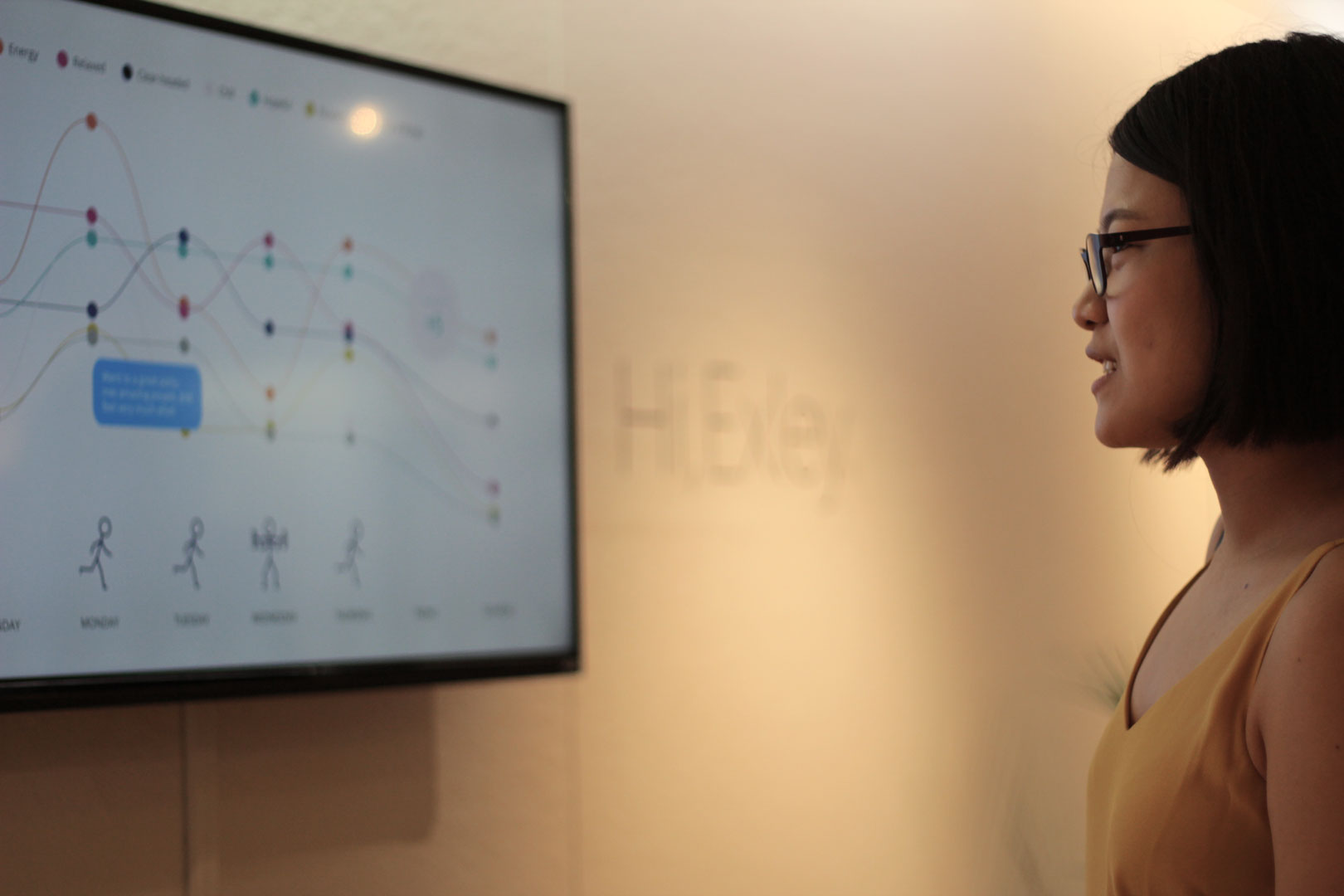What happens when you bring 5 neuroscientists and 5 designers together?
An extraordinary celebration of scientific research and a persuasive showing of the power of design to shape behavior and promote understanding of science. The Leading Strand's first public exhibit, NEUROTRANSMISSION: a design exhibit celebrating neuroscience, opened on July 13, 2016 at the Pratt Design Gallery in Manhattan.
We had over 200 people come through and interact with the designs, and were lucky enough to garner some press.
Though much of society's progress was built on a foundation of scientific discovery, science can sometimes be intimidating and keep people at an arm's length. That's precisely why we put on an exhibit, to engage and immerse the public, invite them to get up close, get to know the creators and ask questions. We encouraged people to touch the science and consider how the research applies to them. Ultimately the hope was that visitors would realize the pursuit of understanding isn't just what drives scientists but it's in all of us, a key part of what makes us human. And that science and design are both creative processes that form a natural partnership.
We hope you enjoy the recap of NEUROTRANSMISSION and have a look at the work the 5 neuroscientist/designer teams have produced. In 13 short weeks, filled with busy days and long nights, the teams came together, bridged worlds and produced inspired work. This is our digital launch.
Click through the carousel below for some images from opening night.
We invited visitors to share their thoughts about scientific research. How did they think science was portrayed in the media? Did they find it engaging, depressing, accurate, optimistic, manipulated or dry?
We also invited people to share their thoughts on what they'd do with 1 Billion dollars of research funding.
Now for the main event.
Below are the 5 brilliant collaborations between world-class designers and cutting-edge neuroscientists.
Vicky Du, Filmmaker
Dhananjay Bambah-Mukku, Postdoctoral researcher, Dulac Lab, Harvard
The Dulac lab uses mouse models to study how neural circuits give rise to behavior. Since mice rely heavily on their sense of smell to activate social behaviors such as mating, parenting, and aggression, our approach is to use the olfactory system as an entry point into neural circuits for these behaviors. By genetically engineering mice that lack a crucial protein necessary to sense pheromones, we have found that females will take on stereotypically male behaviors (e.g. mounting other females) and vice versa. These findings imply that the fundamental neural circuitry that drives these social behaviors is the same in both male and female brains and pheromone sensing is what directs the mouse to sex-appropriate behaviors.
Elaine Khuu, Industrial designer
Andrew Bogaard, MD/PhD Candidate, Fetz Lab, University of Washington
What is the significance of single neuron activity during movements? Neuroscientists have been studying this question for decades and these panels illustrate two different ways to interpret the data.
In each panel, neurons in the motor cortex are represented by metal balls, and the activity of these balls produces movement of a "limb" at the bottom of each panel. Experimental trials are initiated by you, the participant, and signify upstream brain areas sending signals to the motor cortex. Currently, we can only record from a handful of neurons, represented by the colored balls.
In panel 1, the mechanism by which they move the limb is repeatable and algorithmic. In panel 2, the way the neurons move the limb is less algorithmic, and carried out in combination with many other neurons from which we cannot record. Our lab favors this model, where single neurons do not trigger movement on their own.
Kelsey Hunter, Product designer
Julia Basso, Postdoctoral researcher, Suzuki Lab, NYU
Exercise not only affects the body but changes the brain in profound ways. A single bout of exercise triggers a cascade of chemicals to be released within the brain, affecting things such as mood, appetite, pain, and memory. Over time, habitual bouts of exercise increases the brain's ability to create new neurons, changes the shape and functionality of these neurons, and causes the brain regions to grow in size and be supplied with a denser array of blood vessels. Research shows that these changes lead to both short and long-term improvements in mood and cognition. However, outside of the lab, measuring these changes can be difficult. Enter Exley, a bot that tracks your physical activity levels as they relate to both mood and cognition on a daily basis.
Alisa Alferova, Motion designer
Teal Eich, Postdoctoral researcher, Stern Lab, Columbia University
As anyone who has had to help take care of an older relative knows, one of the most difficult aspects of aging is the decrease in cognitive functioning - the ability to think clearly and remember things. For many years, neuroscientists focused on memory capacity, the total amount of information a person can retain and recall in short term tests. But a growing body of research has led many neuroscientists to study inhibition, the ability to focus your attention and ignore certain neural signals, and its role in memory. While the hippocampus has long been considered the seat of memory, new research has found that inhibition and the prefrontal cortex plays a role in both working and long term memory.
A real world example of where inhibition comes into play: imagine an older adult who is on a daily blood pressure medication that requires a specific dosage. When their doctor updates the dosage, not only do they need to remember the new dose, but they need to stop remembering the old dose. If they fail to properly inhibit the old memory, they might take the wrong amount of medication and get sick.
See how you do on a modified version of the inhibition memory test used in the lab.
Brian Foo, Multidisciplinary data artist
Sam McKenzie, Postdoctoral researcher, Buzsáki Lab, NYU
Everything we see, feel, and learn represents new information that needs to be encoded in our brains alongside older, related ideas, memories, and connections. Learning alters the strength of existing memory networks and can even change how we recall a past event. For instance, after the thrill of finishing a half-marathon, we are quick to forget how awful we felt in the middle.
This model is demonstrated via software as a continuously evolving song that listens to, remembers, and takes inputs from its environment. We reimagine the brain as an orchestra, neurons as musicians, and memories as rhythms and show how a rich layered tapestry of music can be built up from a simple set of rules and a small number of connections.
The Leading Strand was incubated and launched during the 2016 TED Residency.
This exhibit wouldn't have been possible without our sponsors and Kickstarter backers. Thank you for helping us make science more accessible.
If you have questions, comments, suggestions or would just like to say hi, please get in touch!
If you'd like to be considered for the next cohort that will begin work in January 2017. Please apply below! We'd love to hear from you.
“Science and everyday life cannot and should not be separated.”



